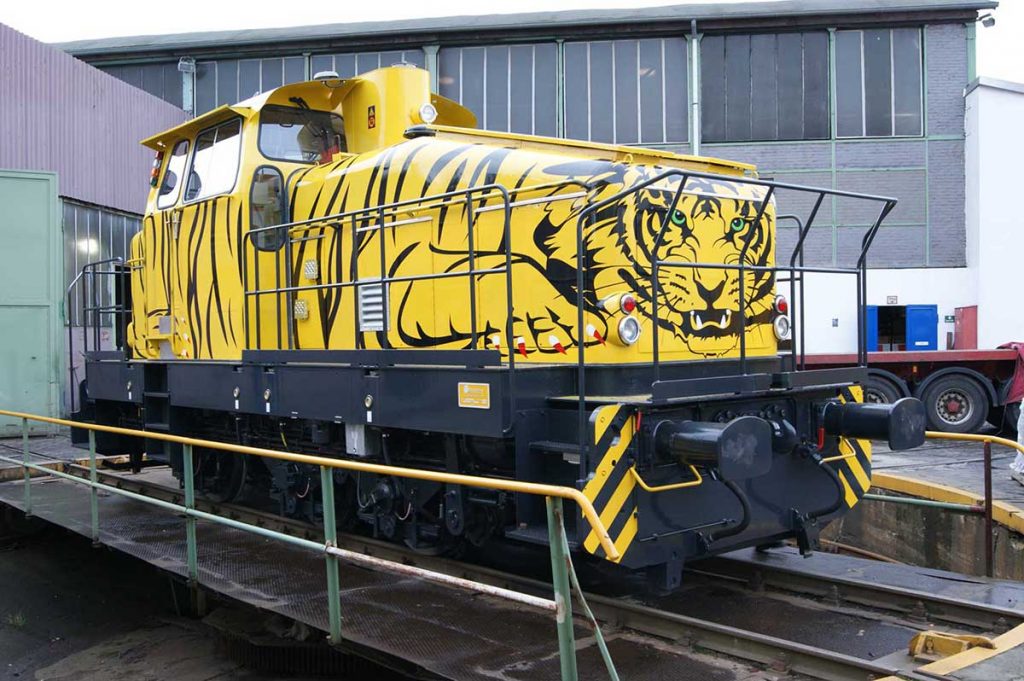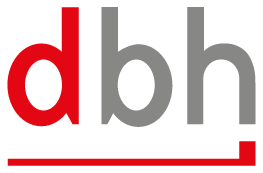Federal Government is funding the SrangierTerminal 4.0 project with EUR 2.35 million: On 27.05.2020 the application of the JadeWeserPort companies for funding of a research project to test the fully automatic shunting process in the exhibition group in the freight transport center (GVZ) of Germany’s only container deepwater port JadeWeserPort Wilhelmshaven was approved. The SrangierTerminal4.0 project is funded by the Federal Ministry of Transport and Digital Infrastructure with a total of EUR 2.35 million under the Innovative Port Technologies Funding Directive (IHATEC).

Usually, container trains with a wireless shunting locomotive are moved into and out of the terminals, which makes it necessary to respan the locomotives and, after the electrification of the main line Oldenburg – Wilhelmshaven, must also be used in the JadeWeserPort. This process leads to additional logistical and material costs. The company regulations provide, for example, for a brake test, which in turn requires a prior optical inspection of the wagons. This requires additional time and human resources. Therefore, lashings mean a restriction of the throughput of the track tracks. In order to optimize the time-critical shunting process and to coordinate it with both container handling and train running planning, the SrangierTerminal4.0 project is to test fully automatic manoeuvring with a locomotive and optimise rail operation according to the requirements of container handling and from an environmental point of view (emissions of noise and pollutants). In order to minimize diesel consumption, a conventional shunting locomotive, the track systems in the GVZ and the management software are adapted. As a rule, the train movements in the GVZ are largely carried out manually via the Electronic Interlocking (ESTW) and are secured by safety technology. Due to the limited time, this means that optimal utilization of track and terminal resources is not generated.
The following aspects serve as decisive sub-steps in the testing of fully automatic shunting operation:
Integration of railway operations – scheduling of train and shunting journeys based on pre-registrations of railway companies (EVU) and the needs of users of the already applied planning software for railway operations, CODIS HASY.
Integration of IT systems on a common platform – linking the data for the automated, semi-automated and manual planning of shunting movements in the curtain group of the GVZ and on the EUROGATE Container Terminal from the existing IT systems with corresponding scheduling software. In the future, automatic forwarding of the data obtained in the project to the CODIS system of the project partner dbh.
Location and automatic operation of the shunting locomotive – implementation of a location solution specially tailored for the railway sector with the integration of map data of the infrastructure for reliable and precise determination of the position of the locomotive and the container trains. Automatic planning and execution of the journeys with sensor monitoring of the area in front of the locomotive.
Optimization of process sequences – By linking the harbour-side systems with the scheduling systems from railway operations, a holistic optimization of the process sequences can be achieved using position-based positioning (energy-efficient use of the automated shunting locomotive by pre-planning of the driving orders, avoiding unnecessary shunting trips).
By integrating rail operations into port logistics processes, incoming and outgoing train journeys can be better recorded on schedule and synchronized with the processes of container handling.
The prerequisites for the decision in favour of the JadeWeserPort as the ideal area of investigation and testing for the research project were, in addition to the almost completed railway area, a low topographical complexity, homogeneous speed ranges and uniform train types (containers only), which differ only in length.
Short portraits of the cooperation partners in the research project RangierTerminal4.0
The Westphalian Locomotive Factory Reuschling GmbH & Co. KG (WLH), Hattingen, was founded in 1914 and has many years of experience in the field of rail vehicles. The company has developed into a provider of holistic solutions for rail vehicle operators and acts as a provider for the development, production and marketing of the modular shunting locomotive within the research project. The WLH is a regular initiator and participant of several national and international research projects.
dbh Logistics IT AG (dbh), Bremen, is one of the leading companies of logistics IT in Germany and develops and operates industry solutions for shipping and port, industry and trade as well as forwarding and logistics. The company is the operator of the port community systems (PCS) for the JadeWeserPort Wilhelmshaven, to which, in addition to the terminal operator, freight forwarders, shipping companies, railway companies, customs, water police as well as large shippers or recipients are connected.
Georg Simon Ohm (THN) is one of the most research-intensive universities of applied sciences in Germany with the Technical University of Nuremberg Georg Simon Ohm (THN). The main topics of the university research strategy include “Transport, Logistics & Mobility”, “Automation & Production Technology” and “Innovative Services”. The research activities of THN with a focus on a high transfer rate of results in applications and services are carried out, for example, at the Institute of Automotive Technology Nuremberg (IFZN) and in the laboratory for mobile robotics. Experience in the field of the automation of shunting tasks can be seen, among other things, in the cooperation with Deutsche Bahn AG.
With more than 9,000 employees at 20 locations and 40 institutes, the German Aerospace Center and the German Space Agency are the national research centre for aerospace and the space agency of Germany with a further focus on energy and transport as well as security and digitalization. The DLR Institute of Transport Systems Technology (DLR-TS) is working on technologies, methods and concepts for the operational, technical and economic optimisation of the railway system. The objectives include increasing operational efficiency and performance through automation and innovative information technologies (ICT) and maintaining a high level of safety standards.
JadeWeserPort Realisation GmbH & Co. KG (JWPR) as port operator takes over the tasks of a port infrastructure company. These include, inter alia, the collection of port charges, the management of own land, the tendering and awarding of maritime services concessions, and the maintenance and monitoring of terminal infrastructure, including nautical measuring equipment. The additional task of the JWPR is to draw up a ship waste management plan and the associated collection and reimbursement of a disposal lump sum. Furthermore, the task includes the establishment and enforcement of rules of use in the form of a port usage regulations, the General Terms and Conditions of Use as well as an alarm and security plan. Furthermore, the operation of the railway infrastructure of the Container Terminal Wilhelmshaven JadeWeserPort-Marketing GmbH & Co. KG is ensured by JWPR as part of the business management.
Container Terminal Wilhelmshaven JadeWeserPort-Marketing GmbH & Co. Kg (JWPM) is a wholly owned subsidiary of the state of Lower Saxony responsible for the construction, maintenance and management of the basic infrastructure of the JadeWeserPort container deepwater port in Wilhelmshaven. It also has to fulfil its tasks and obligations as a railway infrastructure undertaking. For the land-side handling of railway containers, there is a combined transport terminal operated by EUROGATE (KV system) on the terminal site of the JadeWeserPort, which is connected to the public rail network. For this purpose, the JWPM operates a 16-track production group.
The research project RangierTerminal4.0 has a duration from 01.06.2020 to 31.05.2023 with an investment volume of approx. 3.5 million EURO. The implementation of the project RangierTerminal4.0 was tested by TÜV Rheinland Consulting GmbH.
The Innovative Port Technologies (IHATEC) funding programme
The Federal Ministry of Transport and Digital Infrastructure promotes the development of innovative technologies that help ports cope with the volume of transshipments and improve logistics chains. The objectives of the support programme include improving the competitiveness of German sea and inland ports, optimising cargo handling, passenger services in ports and access and departure traffic, and improving digital infrastructure.


